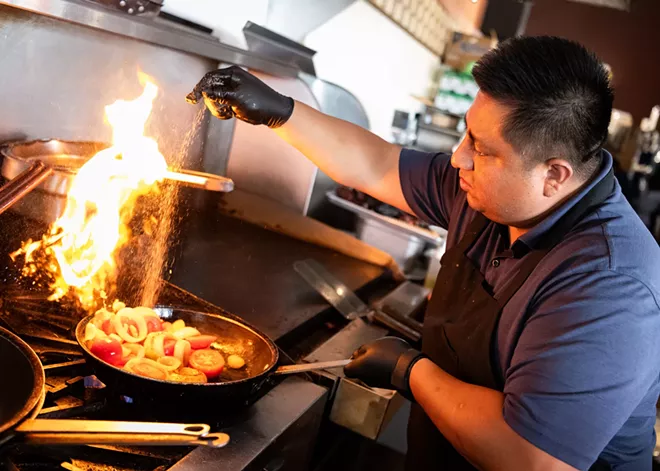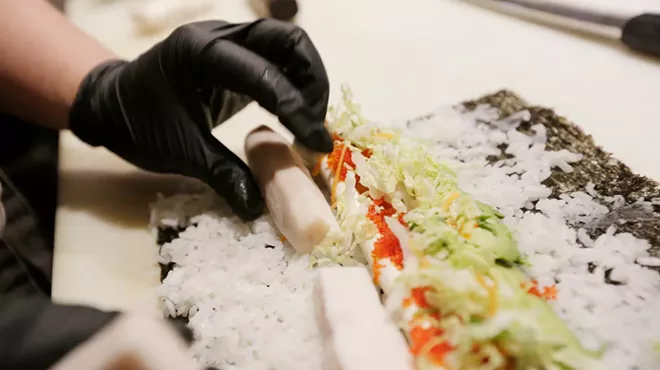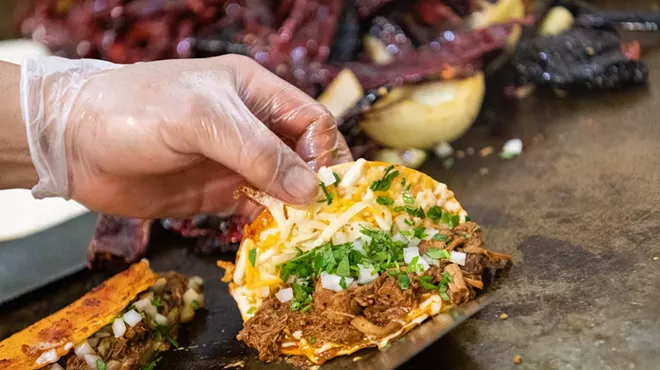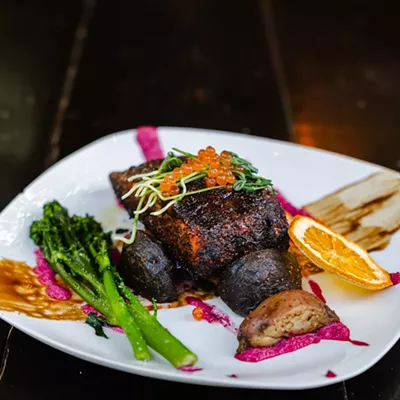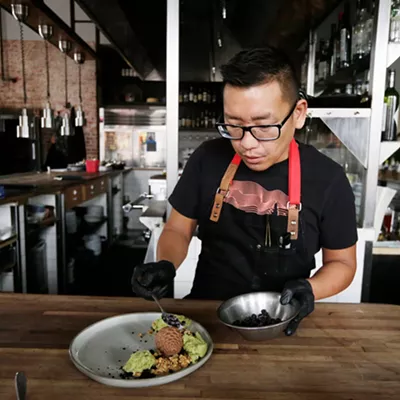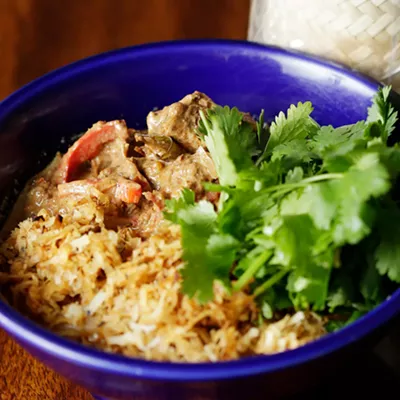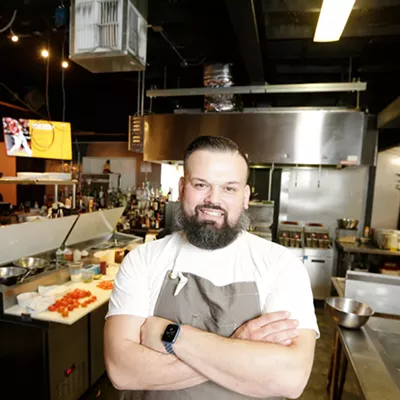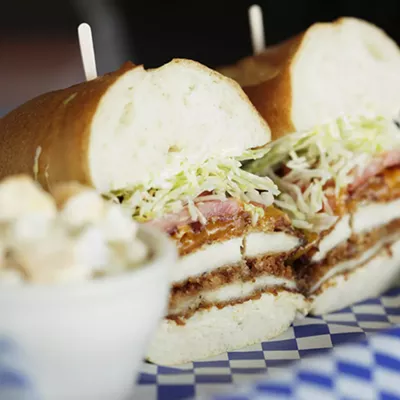Here's how hard it is to make mole negro sauce: Most Mexican restaurants I've eaten at over the years totally suck at it.
Far from a simple savory Mexican chocolate sauce, mole should be a rich world of flavors bursting with smokey umami boldness, subtle sweetness, and pepper heat. Last year while in Sayulita, on Mexico's west coast, I found a place that made such good mole tacos that I had to eat there five straight days.
But when it's done poorly, mole is a dish-ruining mess — a relatively bland cocoa concoction with no pep. If a restaurant isn't committed to the authentic process, it's just a brownish/blackish gravy that turns your meal into sludge.
But fear not, Spokanites. The mole negro at Molé? It lives up to its name. It's super legit.
And once you observe the amount of work that Molé owner and head chef Fredy Martinez puts into concocting traditional Oaxacan mole negro, you totally understand why.
Molé's mole-making process overwhelms with its prep list alone. Martinez brings out not one, not two, but four large trays filled with necessary ingredients. There's a whole tray of just dried peppers varieties: chile ancho, chile guajillo, chile costeño (native to Oaxaca) and chile puya. The recipe also includes cloves, black pepper, cinnamon sticks, Gamesa Marias (Mexican biscuit cookies), tomatoes, onions, garlic, plantains and more.
But the most crucial is the "pure, real deal" chocolate, which Martinez's mother makes by hand with cocoa, cinnamon and sugar at home and dries in the sun before sending it to the restaurant. All this creates the mole paste, which then gets simmered with chicken broth for the actual sauce that's plated on Molé dishes.
Turns out, Martinez is cooking up a small batch of mole paste for demonstration. This abundance will only create 2 kilos of mole negro paste. The typical four-hour process — often overseen and executed by Martinez's wife, Ana, in the morning hours before the restaurant opens — makes roughly 10 times as much. Molé goes through about 20 kilos of mole paste — 100 gallons of sauce — per week.
Martinez begins the process by throwing the various peppers on the grill, toasting them to a burn to get the blackness and smokey flavor notes. Soon cinnamon sticks get added to the grill mix, while in a separate pan he begins to stir fry garlic, onion, tomato, and eventually plantains, walnuts and almonds. Once this smorgasbord of ingredients gets done cooking, they are all blended together to make that quasi-magical mole negro paste.
As someone who learned how to make mole in the traditional manner from the matriarchs in his family, Martinez thinks restaurants that get mole wrong usually simply aren't putting in the effort.
"Just follow to process how it's supposed to be," he says. "Some people just go the easy way. Instead of stir frying and toasting, they just soak everything in hot water and just blend everything. And that is not the way."
The signature sauce is healthily ladeled across a variety of dishes at Molé. On this occasion I indulge in the signature dish — mole negro over bone-in chicken ($25). The dish may seem straightforward — a heaping helping of chicken over a bed of rice with a plantain slice on the side.
But the mole is the complexity. When smothered over the chicken, the dish becomes a rich blast of flavors that put to shame any condescending jibes about Mexican food being a simple mixing of core ingredients. It's a galaxy brain culinary concoction.
And that's hardly the end of Molé's mole offerings. Since the Kendall Yards restaurant opened in December 2021, I've also sampled the excellent mole nachos ($17.50) and mole chicken tamales ($18), with the mole negro over enmoladas ($22), pork ribs ($26) and salmon ($32) still left on my to-eat list.
To concoct mole at home, you have to ask yourself some tough questions. Do I have the massive kitchen space to pull this off properly? Am I willing to put in the effort to go through all the steps? Do I have generations of Oaxaca cooking heritage to draw upon while cooking up the sauce? I'm guessing the answers are probably, "No. Maybe. Definitely not."
Sometimes it's best to not overthink things. Want top-tier mole? Go to Molé. ♦
Molé • 1335 W. Summit Pkwy. • Open Mon 11 am-8:30 pm, Wed-Fri 11 am-8:30 pm, Sat-Sun 12-8:30 pm • molespokane.com • 509-401-8050

